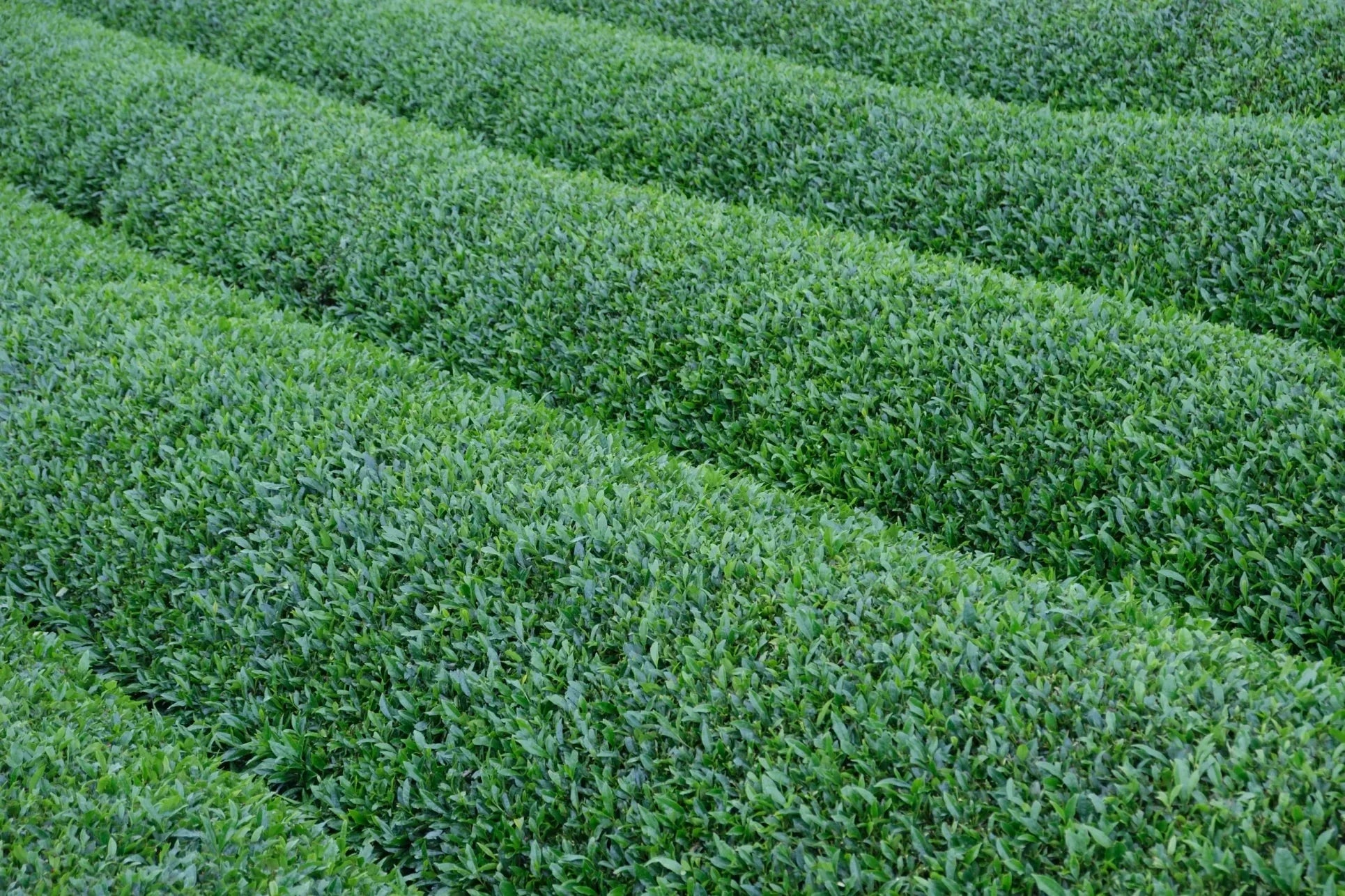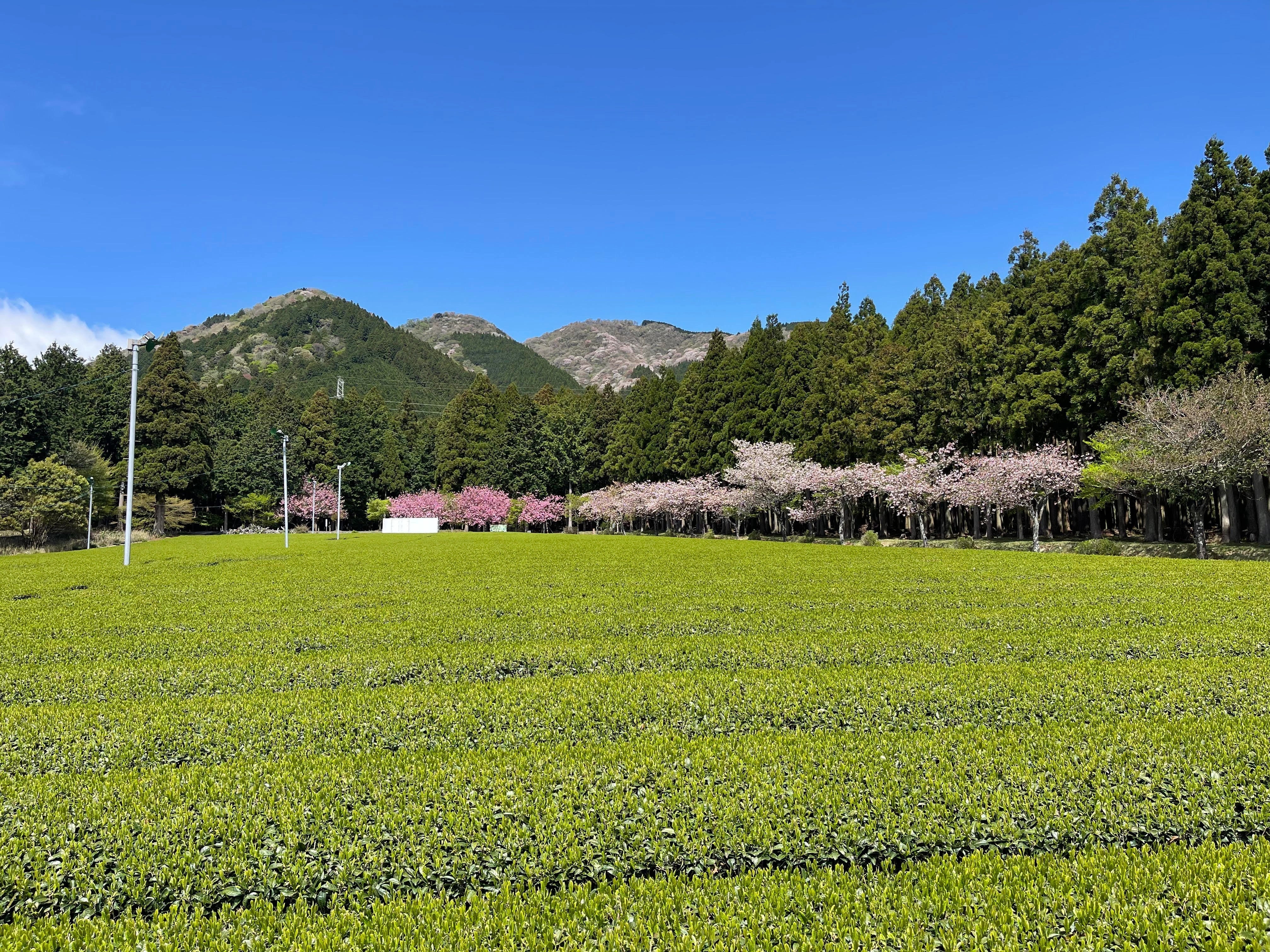Theoretically, yes. They both come from the same plant, Camellia sinensis aka Green Tea. The key difference between the two is how they are grown, harvested, processed and consumed.
Matcha
With matcha 抹茶, the green tea leaves are shaded from sunlight about a month before harvest. Have you noticed how green matcha is? By shading before harvest, it encourages chlorophyll production and turns the leaves into a darker shade of green. Once harvested, the veins and stems are removed, then lightly steamed to halt oxidation before being stone-grounded into a fine powder.
As the entire leaf is consumed, the antioxidant and caffeine levels are higher than regular green tea.
Green Tea
The main difference between Green Tea and matcha is harvesting and processing. They are not shaded before harvest.
After harvesting, the tea leaves need to be dried to prevent fermentation. The drying process can be steamed (in Japan) or pan-fired in a large wok (in China). After drying, the leaves go through a shaping process before being dried again - whew, what a process!
How do I use Matcha/Green Tea?
Matcha comes in powdered form and can be used in a variety of ways (desserts, tea, baking etc). Green tea, is well, tea in loose form or a bag.
With Green Tea, you need to steep in hot water as with any other tea you would drink.
With matcha, you need to whisk the powder so it blends in with hot water before you drink it (otherwise it clumps).
How is matcha priced with green tea?
Generally speaking, matcha is more expensive than green tea in a bag. It is more nutritionally denser and more versatile. If you compare to ordering matcha/coffee at a cafe, it's quite cost-effective to make matcha at home. You can order a trial size of 30g which is $0.76 to $1.52 a serve (1g - 2g), but we find many upgrade to 100g ($0.54 to $1.08). Not all matcha is the same, each matcha will have its different taste profiles. You might also find matcha mixes, that is full of sugar, they tend to be cheaper.
The more expensive matcha is, the smoother it will taste. Ceremonial matcha can cost upwards of $100 per 100g. In Japan, Ceremonial Grade Matcha is used for.. well ceremonials! If you have attended a tea ceremony in Japan, they only used Ceremonial Grade. It's made from the first harvest (top of the plant) and the youngest leaves. Ceremonial is ideally paired with hot water and nothing else. Whereas, Culinary grade matcha can cost as little as $20 per 100g. You do get what you pay for. Culinary grade matcha is made with late-harvest leaves, which ultimately taste more bitter.
We find with chatting to people, they are put off by matcha because they have drunken a culinary grade. Culinary grade is more yellow-green and used for baking where you can taste the green tea. And here comes, Premium grade. It's a mix of the first harvest and second harvest. It's quite smooth on its own with water or tastes beautiful with milk. This is perfect if you have begun your matcha journey but can't justify spending lots on Ceremonial Grade.













